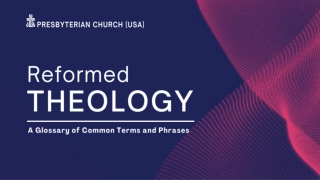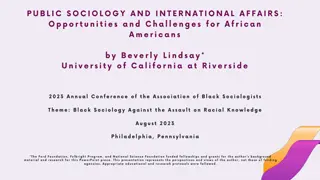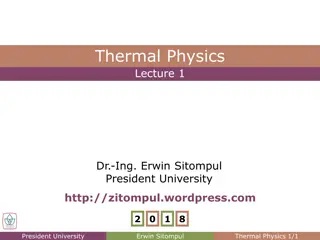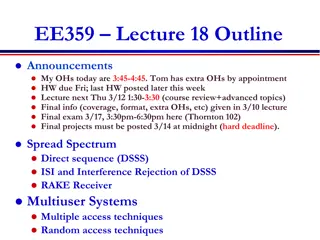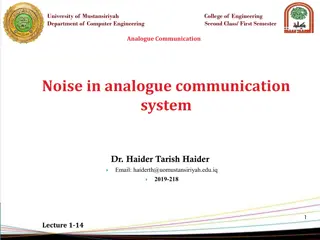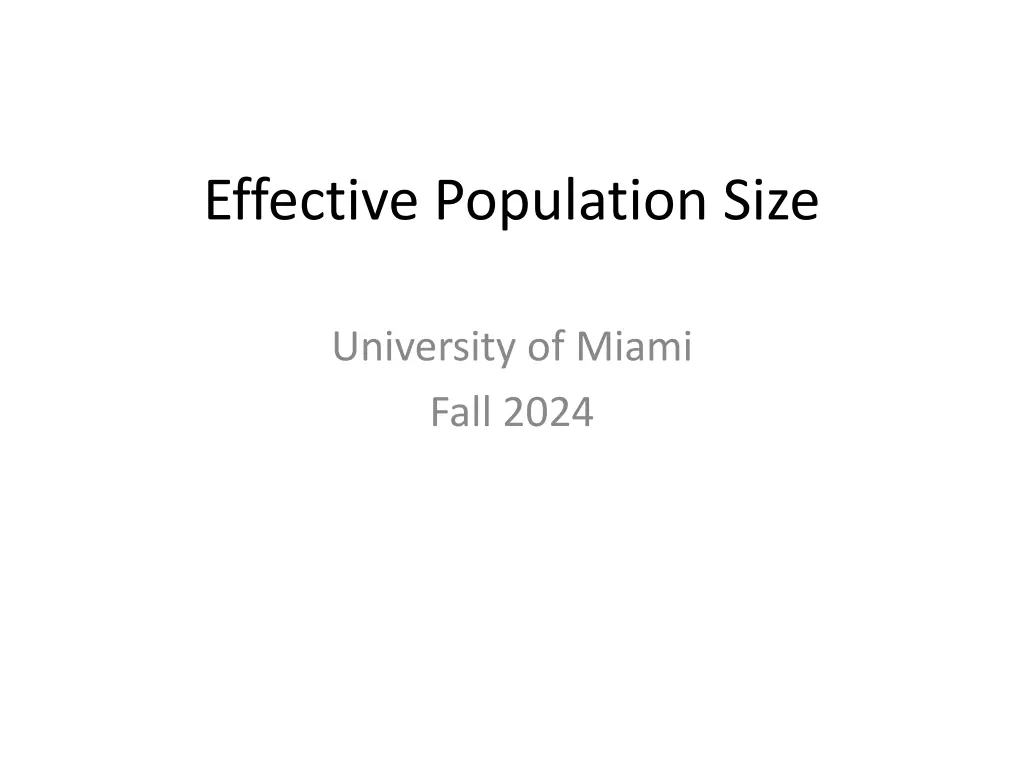
Understanding Effective Population Size and Genetic Drift
Explore the concept of effective population size (Ne) and its importance in genetics. Learn how Ne differs from actual population size (N) and the factors influencing Ne, such as sex ratios and family size variance. Discover the implications of Ne in conservation efforts and captive breeding programs.
Download Presentation

Please find below an Image/Link to download the presentation.
The content on the website is provided AS IS for your information and personal use only. It may not be sold, licensed, or shared on other websites without obtaining consent from the author. If you encounter any issues during the download, it is possible that the publisher has removed the file from their server.
You are allowed to download the files provided on this website for personal or commercial use, subject to the condition that they are used lawfully. All files are the property of their respective owners.
The content on the website is provided AS IS for your information and personal use only. It may not be sold, licensed, or shared on other websites without obtaining consent from the author.
E N D
Presentation Transcript
Effective Population Size University of Miami Fall 2024
N vs Ne Census Population Size (N) = # of adult (all) individuals (breeding or non-breeding) within a population. This # can be counted by observation. Effective Population Size (Ne) = The # of individuals in an idealized population (one that meets Wright-Fisher Model) that has the same magnitude of genetic drift as the actual population.
Wright-Fisher Model 2N diploid individuals, with 2 alleles each. Generations are non-overlapping. At each generation, each chromosome inherits its genetic material from a randomly chosen chromosome from the previous generation, independently from all other chromosomes. Model Assumptions Constant population Discrete/non-overlapping generations Random mating (panmixia) Equal sex ratio One locus No recombination No population structure No selection
Effective population size (Ne): the size of an idealized population that would experience drift the same as the actual population. So Ne depends on: Sex ratio Breeding structure/overlap of generations Mean and variance of family size Variance in population size over time Etc. Empirical estimates of Ne usually show that changes in allele frequencies due to drift are faster than predicted by N. So Neis almost always < N.
Factors Affecting Ne: If sex ratios are unequal. Nedepends more on the rarer sex. Effect of drift is greater if sex ratios are skewed. Bull and Harem Elephant seal harems average ~12 females per male. N = 100,000 Nf = 50,000 Nm = 50,000/12 = 4,167 Ne = 15,384 Elephant Seals
The relationship between Ne and Nf in a population of 1000 mating individuals. https://www.nature.com/scitable/topicpage/genetic-drift-and-effective-population-size-772523
Factors Affecting Ne: If the variance in family (K) size is >2: If all individuals leave the same # offspring, Vk = 0, and Ne = 2N Thus, in captive breeding programs, it is possible to increase the Ne by controlling (equalizing) reproductive output! Simply maximizing number of offspring is not necessarily the best strategy. This is especially important for endangered species.
Factors Affecting Ne: If the population size fluctuates over time: where Ni is the population size in generation i. Ne is calculated as a harmonic mean in this case. Harmonic means have different mathematical properties. Ne is disproportionately affected by time periods with small population sizes, because inbreeding is higher during those times. Genetics diversity declines, and takes a long time to recover. (because mutation acts very slowly)
Ne = 1.5 million Ne = 3.4 million
Effective population size through time: showing a steady decline in Tassie tigers and devils over thousands of years. However, populations appear to have stabilised and even increased approx. 6,000 years ago. https://www.nature.com/scitable/topicpage/genetic-drift-and-effective-population-size-772523
Evolutionary History of Polar and Brown Bears Frank Hailer, Cardiff University, Cardiff, UK, Andreanna J Welch, Durham University, Durham, UK http://www.els.net/WileyCDA/ElsArticle/refId-a0026303.html Published online: July 2016
X-linked DNA mtDNA Autosomal DNA Y-linked DNA Biparental Inheritance Maternal Inheritance Sex-linked Inheritance Paternal Inheritance
Factors Affecting Ne: For different modes of chromosomal inheritance: mtDNA X-linked Y-linked Sex-linked alleles become lost or fixed faster than autosomal alleles, because genetic drift has a larger effect on sex-linked loci.
Gene flow strongly influences Ne Species NC Ne Mallard 9,330,000 640,000 Mottled Duck 135,000 360,000 * * Mottled Ducks & Mallards are closely related but not sister taxa. Because of recurrent hybridization, gene has driven Mottled Duck Ne > NC. Interspecific gene flow has been occurring for a long time. Mottled Ducks have high genetic diversity because of Mallard introgression.
Adaption/Extinction Ne is a genetic diversity measure, usually derived from other such measures such as heterozygosity. Except in the cases of introgression Ne is usually proportional to census population size N (albeit usually smaller) In so far that Ne reflects genetic diversity, Ne reflects the adaptive potential of a population. Therefore it can also reflect potential for extinction because loss of genetic diversity makes species vulnerable to extinction.



